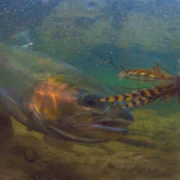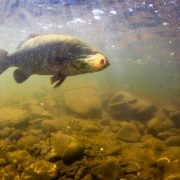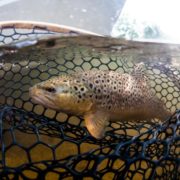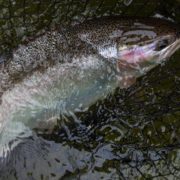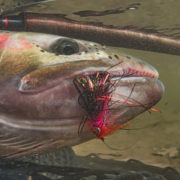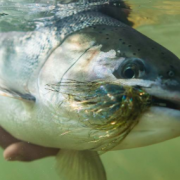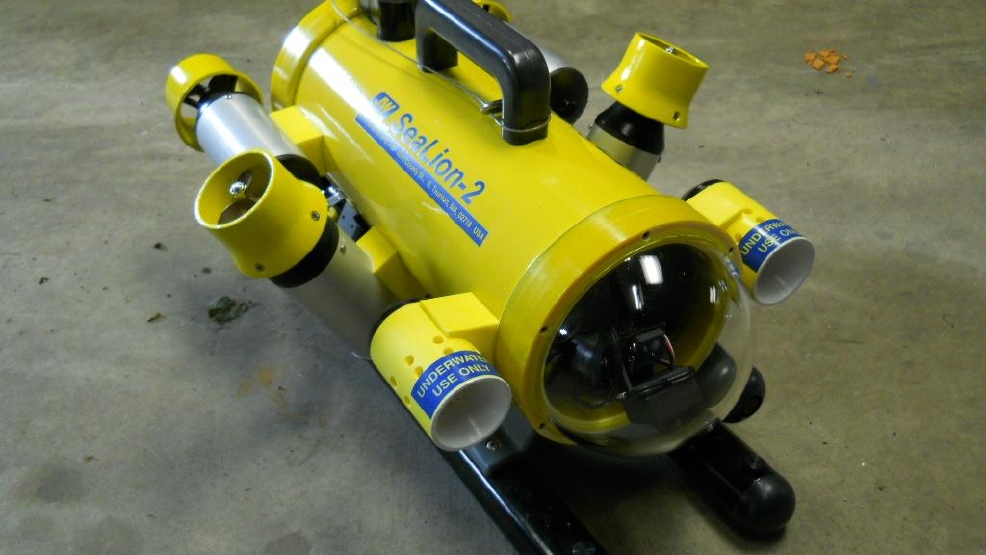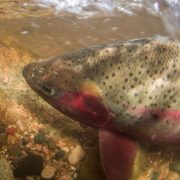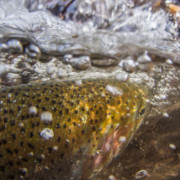Gobies–Everything Eats ‘Em
Over a decade ago, zebra mussels invaded our rivers, and left a trail of destruction in our Great Lakes and their tributaries, altering the resource. In their wake, something that preys on these mussels also arrived, the round goby. Round gobies are an invasive species, and as such they squeeze out native fish. However, they have become a food source in any river attached to the Great Lakes. In some of the bigger rivers, such as the Muskegon and Manistee, they have become a primary food source.
Fly anglers should take advantage of the presence of this bait fish! They are most commonly a sandy tan, and can be found just about anywhere. They are most commonly found in areas with high concentrations of the mussels (especially in proximity to dams). You can fish them with a sink tip or with an indicator, they work well either way.
I most commonly use them for smallmouth bass and for steelhead in a sandy tan.
Don’t hesitate to try them in an inky black, as the males will carry this color through the late winter and through the summer as they breed. They can naturally be quite large, and can grow up to 10 inches in length. Check out how big this one is; it is being consumed by a merganser:
Like so many invasive species, gobies have worked their way into our food chain, and will probably be here indefinitely. Even the snakes eat them!
As far as invasives go, these are useful ones. Add some gobies to your fly box; big things love to eat them!
Thanks for looking!

